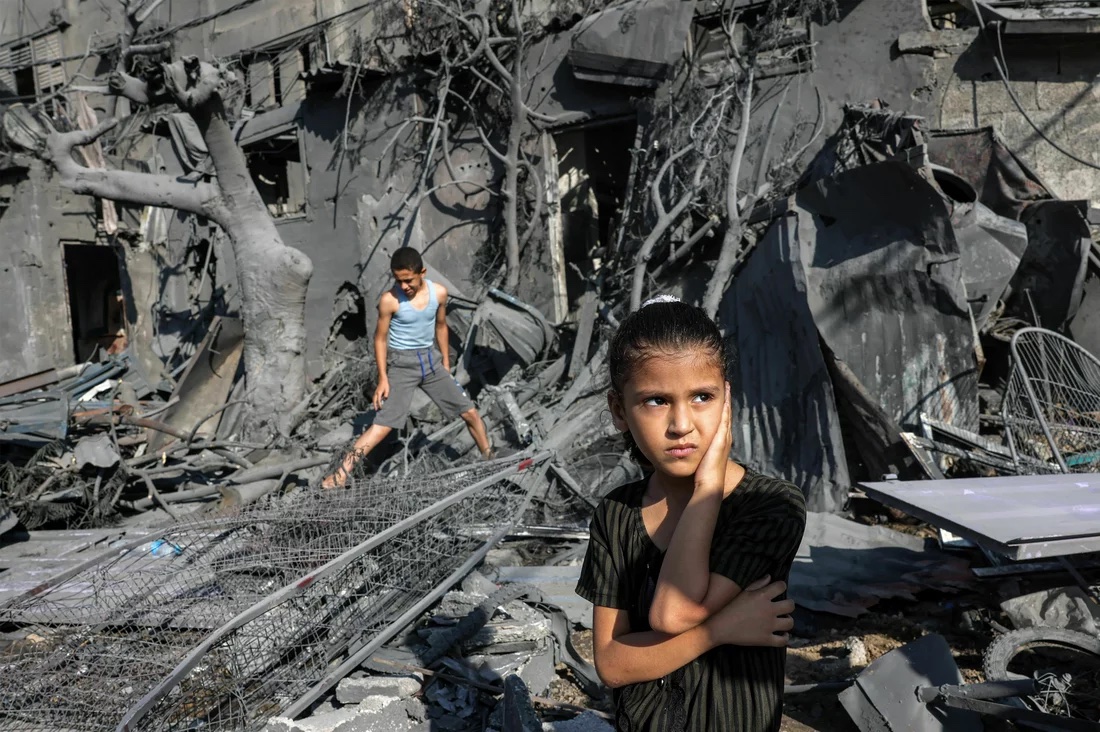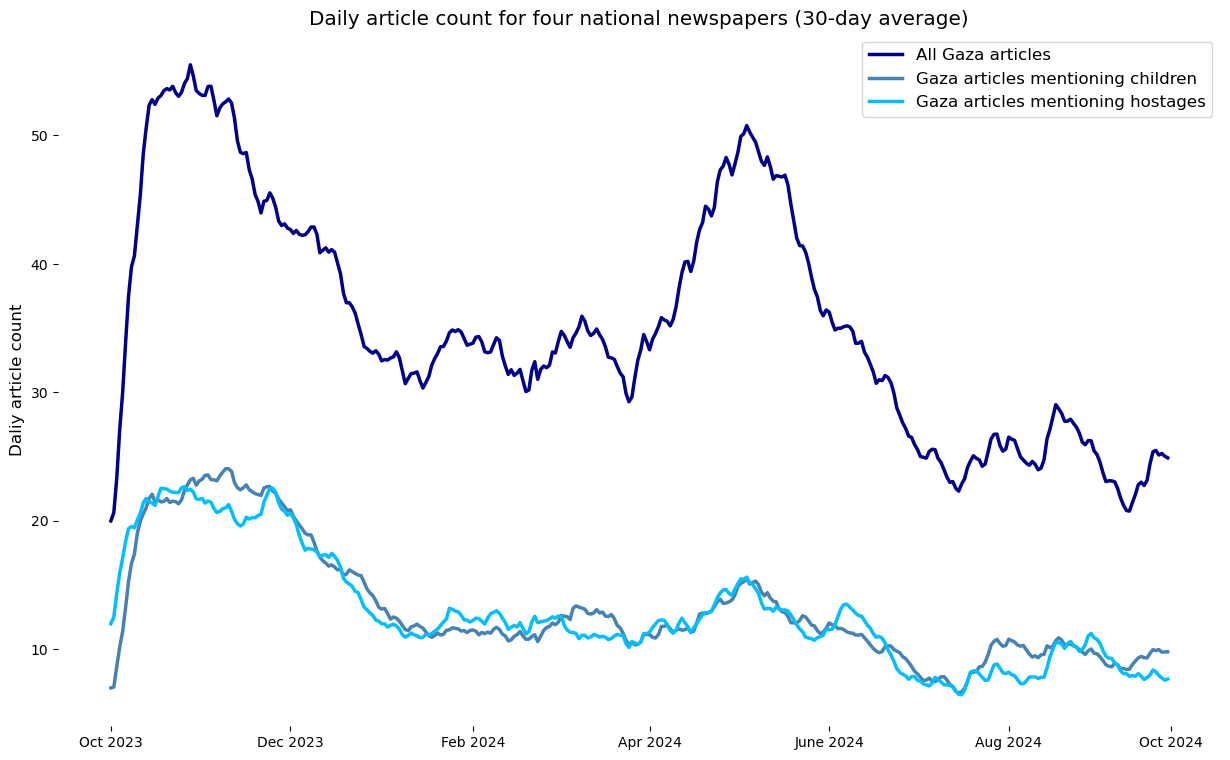Children in the Israel-Hamas War
Coverage One Year Into the Conflict

The public’s understanding of the conflict in Gaza is being shaped every day simply by opening the news. It’s inevitable that some readers may be more sympathetic to one side versus the other, but there are certain topics both sides can likely agree on — for instance, the fact that children are innocent victims in any war zone.
In the early months of the Israel-Hamas conflict, the left-leaning news site The Intercept published a critique of the war’s media coverage, arguing it “heavily favored Israel.” One of their main justifications for this finding was the minimal mention of children among major news sources. According to authors Adam Johnson and Othman Ali, to exclude children from the reporting of the war was to exclude coverage of a group that “typically elicit[s] sympathy from Western media.” They further argued this lack of coverage was particularly significant given the fact that the war has been one of the deadliest for children in modern history.
The Intercept analysis focused on the first six weeks of news coverage following October 7th. What happens if we expand this analysis to a full year of news — has anything changed? Has the media paid more attention to the plight of children in this conflict? To answer this question, I analyze all 12,887 articles mentioning “Gaza” or “Gazan” from October 7, 2023 to October 1, 2024 across four major US publications with a national readership: The New York Times, The Washington Post, The Wall Street Journal, and USA Today. To evaluate the proportionality of coverage of children, I compare it to coverage of another vulnerable group impacted by the war: hostages. Based on the vastly greater numbers of children killed compared to hostages, we may expect coverage of children to exceed that of hostages, especially after the initial weeks of the conflict.
The graph below, which tracks articles mentioning children and hostages within all articles mentioning Gaza, does not support this assumption. Coverage of children has remained limited in the year since October 7, never dramatically exceeding that of hostages — in fact, the two topics parallel each other consistently throughout the year. One might also expect the coverage of hostages in comparison to children to have dwindled over time as October 7 becomes more distant and as more children die, but the data shows otherwise. The comparable mentions for both children and hostages is what critics would likely call disproportionate coverage — especially if one considers that 251 hostages were taken by Hamas, and according to an Oxfam International report from September 30th, at least 11,000 Gazan children have died since the war began and over 25,000 have lost a parent or become orphans.

The media may not capture the scale of tragedy affecting children in Gaza, but when children do come up, what topics are most prevalent? After reading through hundreds of randomly sampled sentences that mention children, it’s clear that they primarily refer to Gazan children.
The majority of articles about children impacted by the war will not include the exact phrases “Israeli children” or “Palestinian children,” but when comparing these two directly, the vast majority mention Palestinian children. The percentage rose from 68% in 2023 to 88% in 2024, as well — this increase is noteworthy, but also expected, as the death toll among Palestinian children continues to rise.
Within the broader set of articles mentioning Gazan children affected by the war, “women and children” are often grouped together, and some of the recurring topics include malnutrition, humanitarian aid, and health. The sentences that touch on Israeli children, which again are many fewer in number, primarily refer to those taken hostage, as well as to the families of the October 7th hostages.
Coverage of children, as suggested in The Intercept analysis, is indeed relatively minimal when compared to the actual circumstances observed in Gaza, and, further, decreases over time. Despite this, when reporting on children, the media has focused their attention on those most affected, and has covered a range of topics that have changed — and sometimes ended — their young lives.
Having just passed the one-year anniversary of October 7th, it’s clear that how the media portrays the war in Gaza and particularly the children affected by the war is worthy of ongoing attention. It is likely to have a significant impact on how people view the scale of the Gazan crisis and the fate of its most vulnerable victims.
—Abby Ward
Methodological note: I examined all 12,887 articles containing “Gaza” or “Gazan” in the New York Times, Washington Post, Wall Street Journal, and USA Today published between October 7, 2023 and October 1, 2024. I then tagged all articles that mentioned “children”, “kid”, or “kids”, as well as articles that mentioned “hostage” or “hostages”. I used a 30-day exponential moving average to facilitate interpretation of daily article counts. For additional information regarding our methods, see here. Photo credit: NPR (Mohammed Abed/AFP via Getty Images).